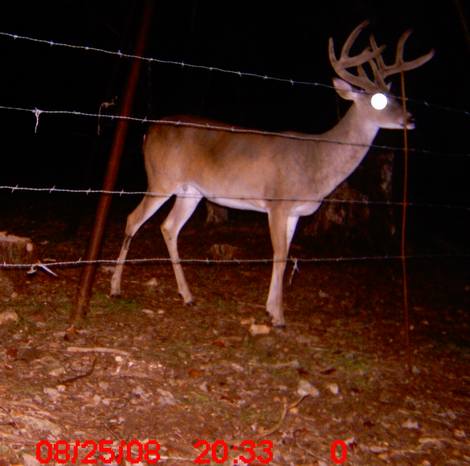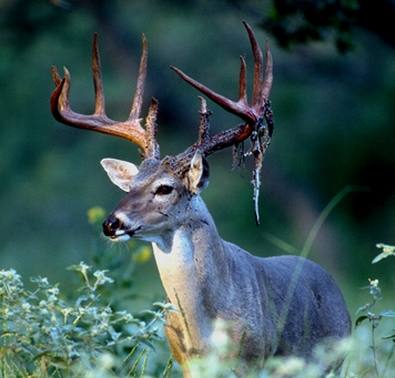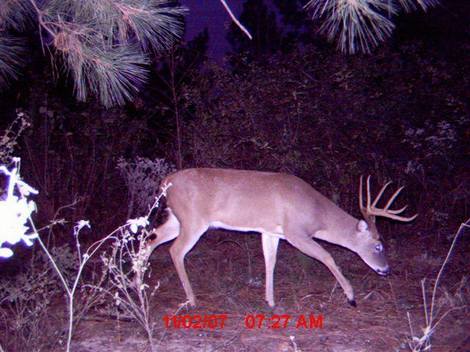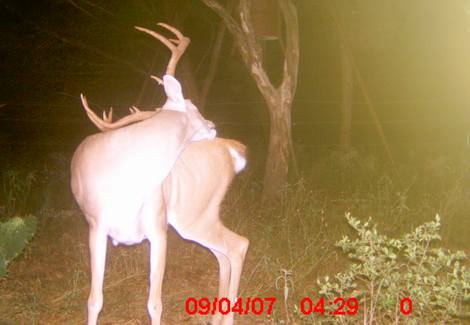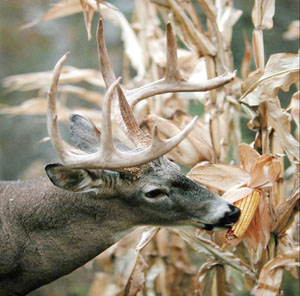With the fall deer hunting season just around the corner and thousands of game cameras attached to trees, posts, or anything else an ingenious hunter can mount a camera to, photos are constantly being taken of white-tailed bucks going through rapid antler transformations — from velvet covered antlers to fresh, clean racks. It really is amazing how fast antlers can grow, but just as amazing is how fast a buck can take it all off!
Last week we talked about how minerals are transported from a buck’s skeleton as its antlers grow, but this week we are are touching on the velvet removal process. Velvet is removed because testosterone levels of bucks rise during the fall triggering the mineralization of the cartilage-like tissue. Because a buck’s antlers are very tender during the velvet stage and they have low levels of testosterone, bucks are very friendly towards one another. In fact, you will rarely see bucks fighting at all during the antler growing period.
But don’t think they don’t fight. Bucks do fight, they just do not use their antlers. During the spring and summer, whitetail bucks often settle fights by threats and posturing, but when push comes to shove they fight much likes does — on their hind legs using their front legs to kick! But back to the mineralization of antlers.
Once antlers become totally mineralized, the blood vessels in the velvet surrounding them dies and begins to dry up. As the velvet begins to slough off bucks will aid the process by rubbing their antlers on nearby saplings and trees. Bucks will continue to rub their antlers on brush up until the rut as they work off building aggression and prepare for battle with other white-tailed bucks.
The photos below show a 9-point buck located in central Texas over about a week period. You can identify the buck as the same deer because of his short G4 on the right side, but you can see that this guy went from velvet to clean in short order. And just think, he will be shedding his antlers in about 5 months and starting all over, if he makes it through hunting season!
